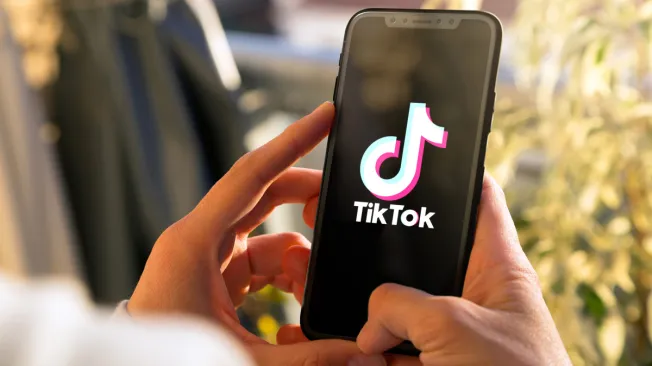On July 30, 2025, TikTok officially rolled out “Footnotes”—its community-driven fact‑checking feature in the United States 🇺🇸. Inspired by Twitter/X’s Community Notes and similar systems by Meta, Footnotes invites vetted users to provide additional context, corrections, or clarifications under videos that may contain misinformation, misleading claims, or incomplete context.
At a time when TikTok serves as a news source for 17% of American adults, the platform faces increasing pressure to improve content reliability. Footnotes joins TikTok’s existing fact‑checking ecosystem—including content labels, search banners, algorithmic detection, and partnerships with third‑party fact‑checkers—to enhance credibility and user trust.
Table of Contents
What Is Footnotes?
“Footnotes” is a crowdsourced annotation system that allows approved contributors to add explanatory notes beneath videos. These notes may contain:
Corrective information
Clarifying context
Reliable references supporting or refuting claims
Contributors also rate the helpfulness of others’ notes. TikTok uses a bridging‑based algorithm: notes rated helpful by users with diverse viewpoints are more likely to be published, helping guard against bias or manipulation.
Why TikTok Launched Footnotes
1. Combatting Misinformation
With short-form videos often used to share rapidly-evolving or complex topics, misinformation can spread quickly. Footnotes provides in-line context to clarify misinformation before it becomes viral.
2. Enhancing Platform Integrity
Footnotes complements existing trust tools like content labels, search banners, and TikTok’s global fact‑checking program involving 20+ IFCN‑accredited organizations across 60 languages and 130 markets.
3. Regulatory Pressures
Amid ongoing scrutiny over its operations in the U.S. and a required divestiture deadline tied to national security concerns, TikTok is demonstrating responsiveness through launched safety tools like Footnotes.
How Footnotes Works
Eligibility & Contributor Enrollment
Initially, nearly 80,000 U.S.-based users qualified to contribute as Footnotes annotators. Eligibility criteria include:
U.S.-based
Aged 18 or older
TikTok account active for at least 6 months
No recent Community Guidelines violations
TikTok plans to gradually expand participation over the coming months.
Submission & Review Process
Contributors write a Footnote with explanatory text and a reference link to a “reliable source” (self-selected at launch). TikTok will later assess the sources to establish reliability criteria.
Other contributors rate the note’s helpfulness. TikTok’s bridging algorithm prioritizes notes that receive helpful votes from people with opposing views, boosting them to public visibility. Then, the broader U.S. TikTok user base can view and rate those published notes.
Display & Limitations
Footnotes appear only on the original video, not on duets or stitches, and not on ad content. Notes may take several weeks to become public as the system calibrates.
TikTok’s Hybrid Moderation Model
Unlike Meta and X, which have shifted entirely to user-moderated systems, TikTok retains its professional fact-checking partners alongside Footnotes contributors. This dual approach aims to balance scalability and credibility.
Benefits of Footnotes
1. Community Engagement
Provides an inclusive, participatory platform where trained users can correct or augment information directly.
2. Contextual Clarity
Helps viewers understand nuance, historical context, or evolving information that a video alone may omit.
3. Reduced Bias Risk
Bridging‑based rating system promotes consensus across diverse viewpoints.
4. Reinforced Safety Suite
Strengthens TikTok’s existing tools—content labels, search info, and traditional fact-checking programs.
Challenges & Criticisms
1. Consensus Limitations
Some content—particularly politically polarizing or niche topics—may never reach consensus, preventing useful notes from appearing.
2. Potential for Abuse
Bad actors may attempt to flood submissions with misinformation or manipulate ratings, potentially undermining integrity.
3. Speed of Deployment
Since viral misinformation spreads quickly, delayed publication of footnotes may limit their corrective impact.
4. Limitations in Source Judgment
At launch, TikTok allows users to self-select “reliable sources”—TikTok will only later audit source quality. This may lead to variability in validity and authority of references.
5. Comparison with Community Notes
Research into platforms like X shows that over 90% of Community Notes are never published, raising questions about broader efficacy and visibility overall.
Implementation Timeline & Rollout
April 2025 – TikTok begins internal testing and pilot sign‑ups in the U.S.
July 30, 2025 – Public launch and expanded rollout in the U.S.; nearly 80,000 contributors eligible at launch.
Coming months – User access to contributor signup expands; more videos display published Footnotes.
Case Comparisons: Footnotes vs Community Notes
Similarities
Crowdsourced annotation systems (like X’s Notes, Meta’s Community Notes)
Bridging-style rating systems to reduce echo chamber effects
Aims to add context without editorial bans
Key Differences
| Feature | TikTok Footnotes | Meta / X Community Notes |
|---|---|---|
| Retains professional fact-checkers? | Yes (20+ IFCN partners) | No; replaced with community-based only |
| Scope | Short-form videos only | Posts, videos, across platforms |
| Eligibility | 18+, 6+ months on TikTok, no violations | Varies by platform; criteria often looser |
The Broader Implications
TikTok’s dual system acknowledges shortcomings in purely community-driven moderation and leverages traditional fact-checking as a parallel safeguard. Critics say platforms like Meta, by eliminating professional fact-checkers, reduce reliability—TikTok aims to differentiate by blending both approaches.
Academic studies also suggest that community notes work best when paired with verified factual sources—as seen in Birdwatch/Community Notes systems, where professional fact-checking still plays a role for broader misinformation narratives.
Conclusion
TikTok’s Footnotes represents a significant evolution in platform-led misinformation control. By combining crowdsourced annotations, bridging algorithms, and professional fact‑checking, TikTok aims to offer more context for short video content while maintaining credibility and safety. However, effectiveness will hinge on system speed, contributor quality, and prevention of manipulation.
As TikTok deepens its safety tools in the U.S.—amid regulatory and public scrutiny—Footnotes stands as a hybrid model that could inform broader industry strategies. For users and regulators alike, watching its rollout and evolution may offer key insights into the future of community-driven content moderation.
FAQs
Q1. What is TikTok Footnotes?
Footnotes is TikTok’s crowdsourced annotation tool that allows qualified users in the U.S. to add context, corrections, or clarifications beneath videos.
Q2. How does Footnotes differ from comments?
Footnotes are vetted, rated, and algorithmically published to serve as informational context—not just opinions or reactions.
Q3. Who can contribute to Footnotes?
Initially ~80,000 U.S. users who are 18+, have had a TikTok account for 6+ months, and have no recent guideline violations. Others can apply over time.
Q4. Do all videos show Footnotes?
No. They appear only when sufficient high‑quality, highly rated Footnotes exist. Duets, stitches, and ads are excluded.
Q5. How long does it take for a Footnote to appear?
It may take weeks for notes to appear, especially initially, as the system calibrates and contributors gain experience.
Q6. Can Footnotes be manipulated?
TikTok uses a bridging consensus algorithm to minimize bias; contributors can also report abusive notes. But risks of manipulation remain.
Q7. Does TikTok still use professional fact-checkers?
Yes. Footnotes complements—not replaces—their 20+ IFCN-accredited fact‑checking partners globally.
Q8. Are Footnotes effective on political content?
Consensus can be hard to reach on divisive topics, so notes may not appear even when needed.
Q9. Can footnote submitters choose sources freely?
Initially yes. TikTok plans to review and standardize what constitutes a reliable source.
Q10. Is Footnotes available globally?
Not yet. It is currently launched as a U.S. pilot—global expansion has not been announced.












